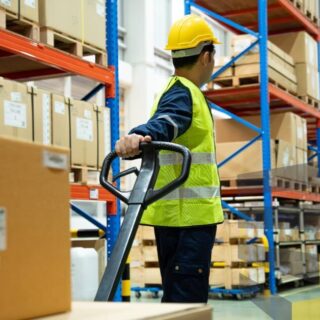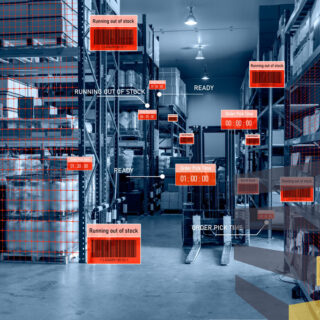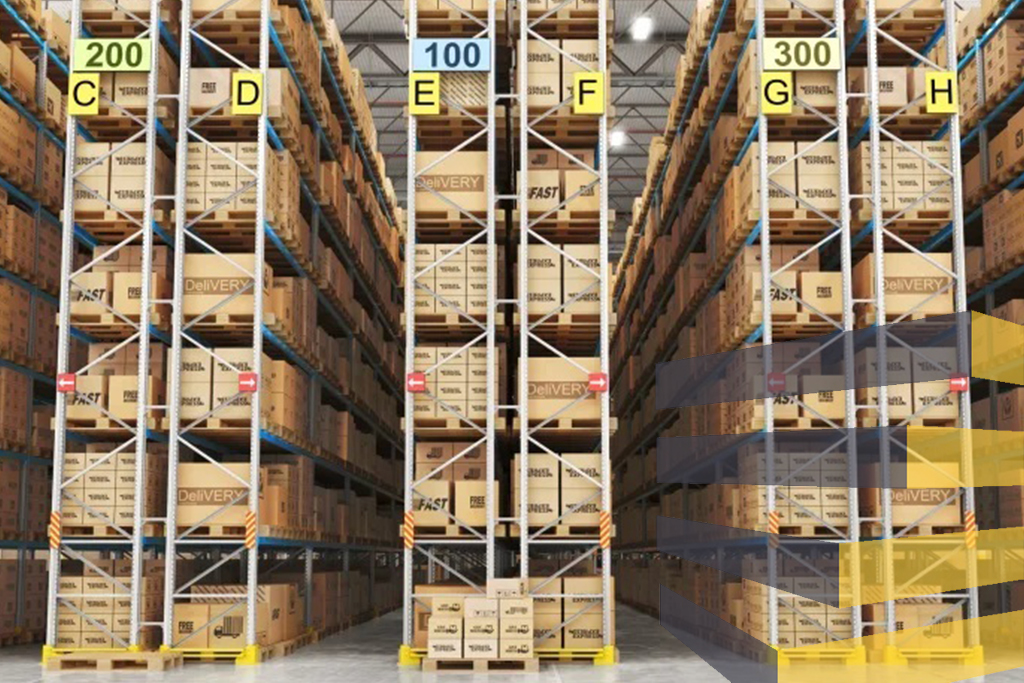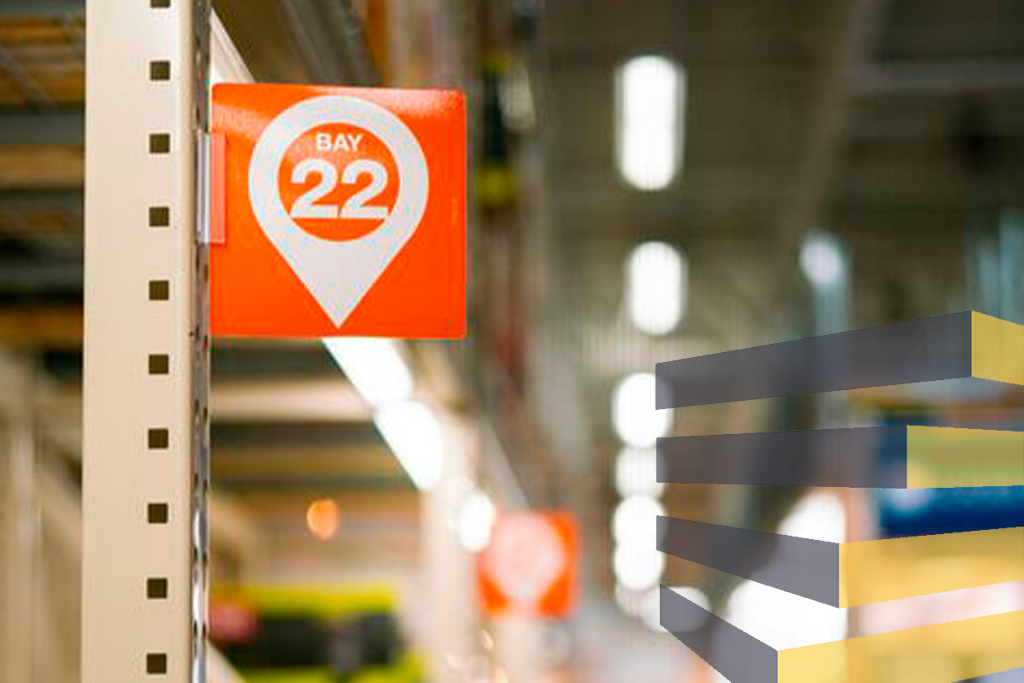Efficiency is crucial to any business that uses a warehouse or distribution center, and clear signage is key to guaranteeing it. Because well designed and properly set out warehouse signs are crucial to maintaining order in the facility.
Warehouse signs serve multiple functions, including navigation, inventory management, hazard awareness and safety promotion.
SEE ALSO: What is industrial cleaning and when does your warehouse need it?
In Brazil, warehouse signs must be in keeping with local regulations such as the NR-11 guidelines, and working with professionals from the start can help guarantee that all signage is designed and installed to be fully compliany with local laws.
Contact us if you need a supplier or installer of warehouse signs in Brazil, Mexico, or the United States.
The importance of warehouse signs
Some warehouse signs help provide a clear guidance system to employees, ensuring that items are stored and retrieved with precision. Properly placed signs can direct personnel to specific aisles, shelves, or storage areas, resulting in a streamlined workflow, ultimately enhancing productivity.
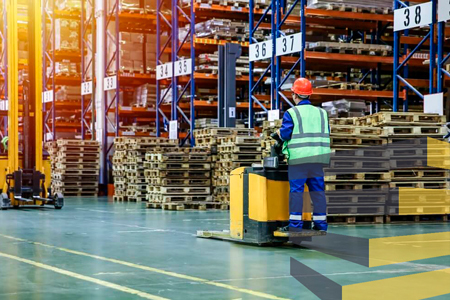
Others contribute to a safe working environment. They can denote hazardous areas and communicate important safety information. In emergencies, warehouse signs revealing fire exits or first-aid stations help guide workers through disasters.
Additionally, signs indicating weight limits or maximum stacking heights help prevent accidents caused by overloading shelves or racks. There are also signs that warn of hazardous substances and spills.
Warehouse signs are subject to many regulations. Clear signage that complies with necessary requirements both avoids financial penalties and keeps everyone safe. In Brazil, this is overseen by regulatory institutions such as ANAMT, ABNT and the Ministry of Labor.
An efficient warehouse signage plan also creates better visual cues of a well-run business. Clear and professional-looking signage instills confidence and pride in staff, customers, partners, and regulatory bodies.
For new employees, signs are important in the training and onboarding process. They provide help in familiarizing people with the layout and procedures of a warehouse, as well as keeping them away from potential dangers.
Common types of warehouse signage in Brazil
Managers can combine different warehouse signs to ensure smooth operations, bolster safety measures, and maintain regulatory compliance.
You may use warehouse aisle signage to move quickly to a certain area, for example, then consult a storage sign to make sure you are following correct procedure in putting the item into the racking system.
Aisle signs: used to organize different sections or aisles with numbers, warnings, arrows, or letters.
Barcode signs: provide detailed information when scanned, working well with an efficient warehouse barcode system.
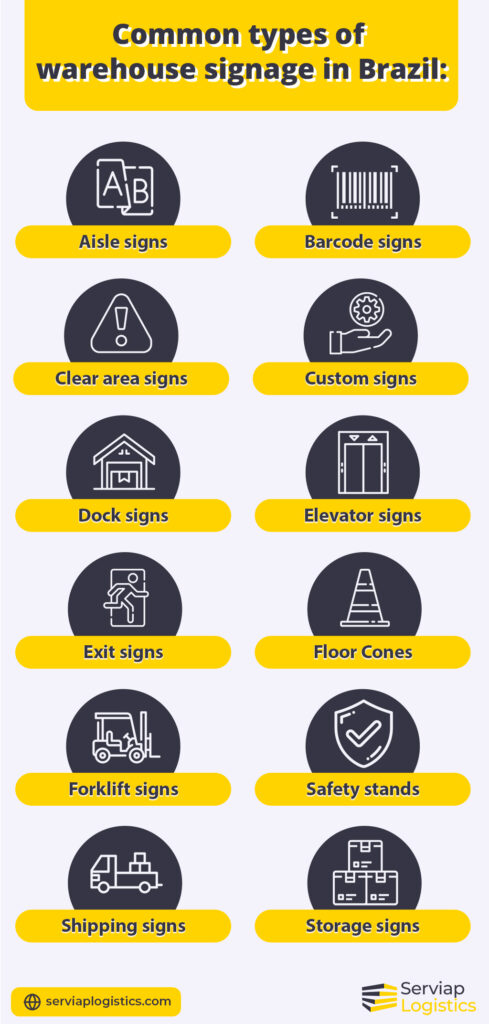
Clear area signs: instruct staff to keep areas and aisles clear and clean at all times.
Custom signs: for facilities with specific needs, such as logos and descriptions.
Dock signs: contain a wide range of information related to loading and unloading docks for both internal and external use.
Elevator signs: used in elevators to either restrict or permit passengers, machinery, or other equipment, according to need.
Exit signs: designed to indicate the locations of emergency exits within a warehouse, usually with universal, recognizable symbols or simple phrases.
Floor cones: give temporary information and can easily be moved and replaced when necessary.
Forklift signs: advise forklift traffic on directions and prohibited areas as well as sound horn caution.
Safety signs: remind staff of best safety practice to prevent accidents, or where hazardous materials or situations may exist.
Safety stands: are positioned strategically to warn about temporary dangers, such as wet surfaces or spills.
Shipping signs: contain information about shipping, receiving, and delivery areas.
Storage signs: give specific instructions for storing processes in certain areas.
Materials and application of warehouse signs
Warehouse signs can be made of different materials. The most familiar type is made of hard plastic and screwed onto other surfaces. Others come with folded borders in case you want to position them on shelves or rails. Another option for more temporary purposes are warehouse signs made of paper or cardboard.
When you need to regularly modify some information contained in a specific sign, you can use a blank base with stickers over the top. You can also find signage made of magnetic material which will easily stick to metallic surfaces with little effort.
If a sign displays information that needs to be read from afar, you may consider placing it as a hanging sign from the ceiling or shelftops. On the other hand, warehouse signs with more detailed information need to be located in readable positions.
Most warehouses will need dock door signs, which are critical to keeping the flow of goods as well-organized as possible while guiding external drivers visiting the facility. To help with traffic in the facility as a whole, you can also consider putting warehouse signs and stands on the floor.
All of these will work with your warehouse floor demarcation using tapes, paint, and other materials. Integration with your labeling and barcode system is also an important point to consider.
Finding top suppliers, installers, and inspectors in Brazil
In Brazil, generally you will be able to reach out to a local supplier and select warehouse signs on your own. However, it can be more productive to collaborate with a warehouse setup consultant to help you choose the most durable, appropriate and cost-efficient according to your needs, especially if you’re just starting out.
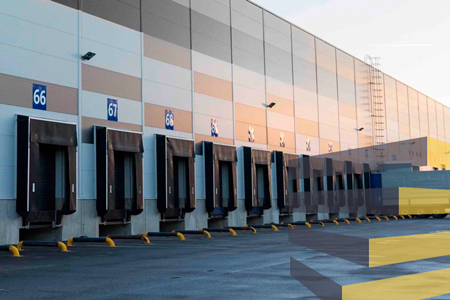
It’s possible to set up your warehouse signage system by yourself. However, this can present risks for their employees and the infrastructure. Remember that different signage may require different installing tools and that many warehouse signs have to follow certain guidelines to comply with the law.
Consultants can connect you with top professional installers, which can be a game-changer. Experts have all the necessary training, tools, vehicles, and PPE. Consulting and supplying companies usually also offer their own installation services, making the whole process streamlined.
It’s normal for materials to deteriorate throughout the years, just like your operations can grow and you may need new signage, so regular inspections are crucial to keep your facility ready and optimized. Professional installers will often offer these services too, or can point you in the right direction.
Serviap Logistics supplies and installs warehouse signs
At Serviap Logistics, we specialize in providing and installing a top-quality warehouse signs system to enhance safety and organization within our clients’ facilities.
In addition to warehouse signage, we offer a comprehensive range of warehouse setup products and services, including racking, collision protection, labels, and floor marking. We also provide expert project management for warehouse refits, and relocations.
With a presence in Brazil, Mexico, and the United States, we have the privilege of serving some of the world’s largest and best-known companies from a wide range of sectors.
Contact us for more information.


